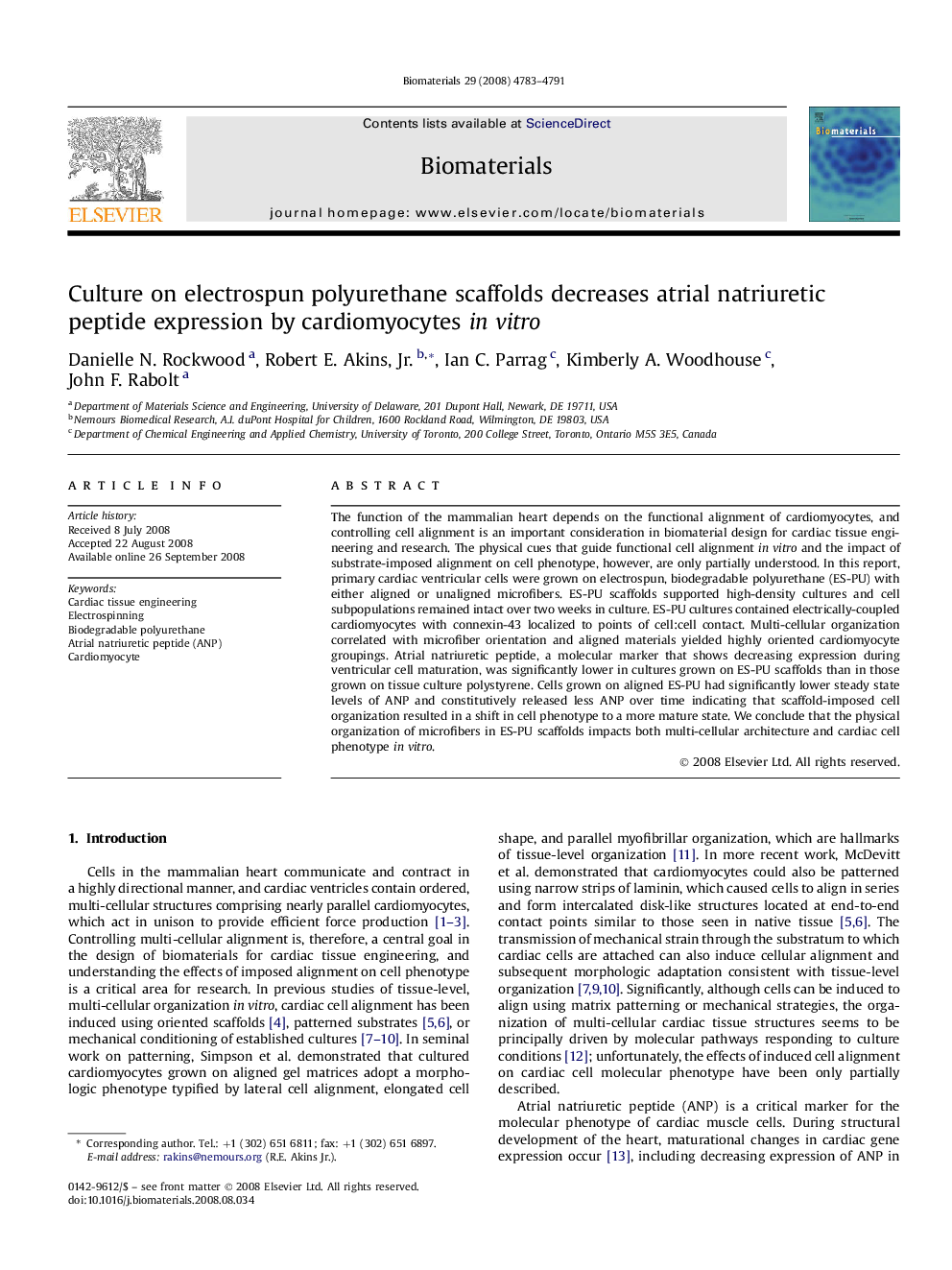| Article ID | Journal | Published Year | Pages | File Type |
|---|---|---|---|---|
| 9069 | Biomaterials | 2008 | 9 Pages |
The function of the mammalian heart depends on the functional alignment of cardiomyocytes, and controlling cell alignment is an important consideration in biomaterial design for cardiac tissue engineering and research. The physical cues that guide functional cell alignment in vitro and the impact of substrate-imposed alignment on cell phenotype, however, are only partially understood. In this report, primary cardiac ventricular cells were grown on electrospun, biodegradable polyurethane (ES-PU) with either aligned or unaligned microfibers. ES-PU scaffolds supported high-density cultures and cell subpopulations remained intact over two weeks in culture. ES-PU cultures contained electrically-coupled cardiomyocytes with connexin-43 localized to points of cell:cell contact. Multi-cellular organization correlated with microfiber orientation and aligned materials yielded highly oriented cardiomyocyte groupings. Atrial natriuretic peptide, a molecular marker that shows decreasing expression during ventricular cell maturation, was significantly lower in cultures grown on ES-PU scaffolds than in those grown on tissue culture polystyrene. Cells grown on aligned ES-PU had significantly lower steady state levels of ANP and constitutively released less ANP over time indicating that scaffold-imposed cell organization resulted in a shift in cell phenotype to a more mature state. We conclude that the physical organization of microfibers in ES-PU scaffolds impacts both multi-cellular architecture and cardiac cell phenotype in vitro.
